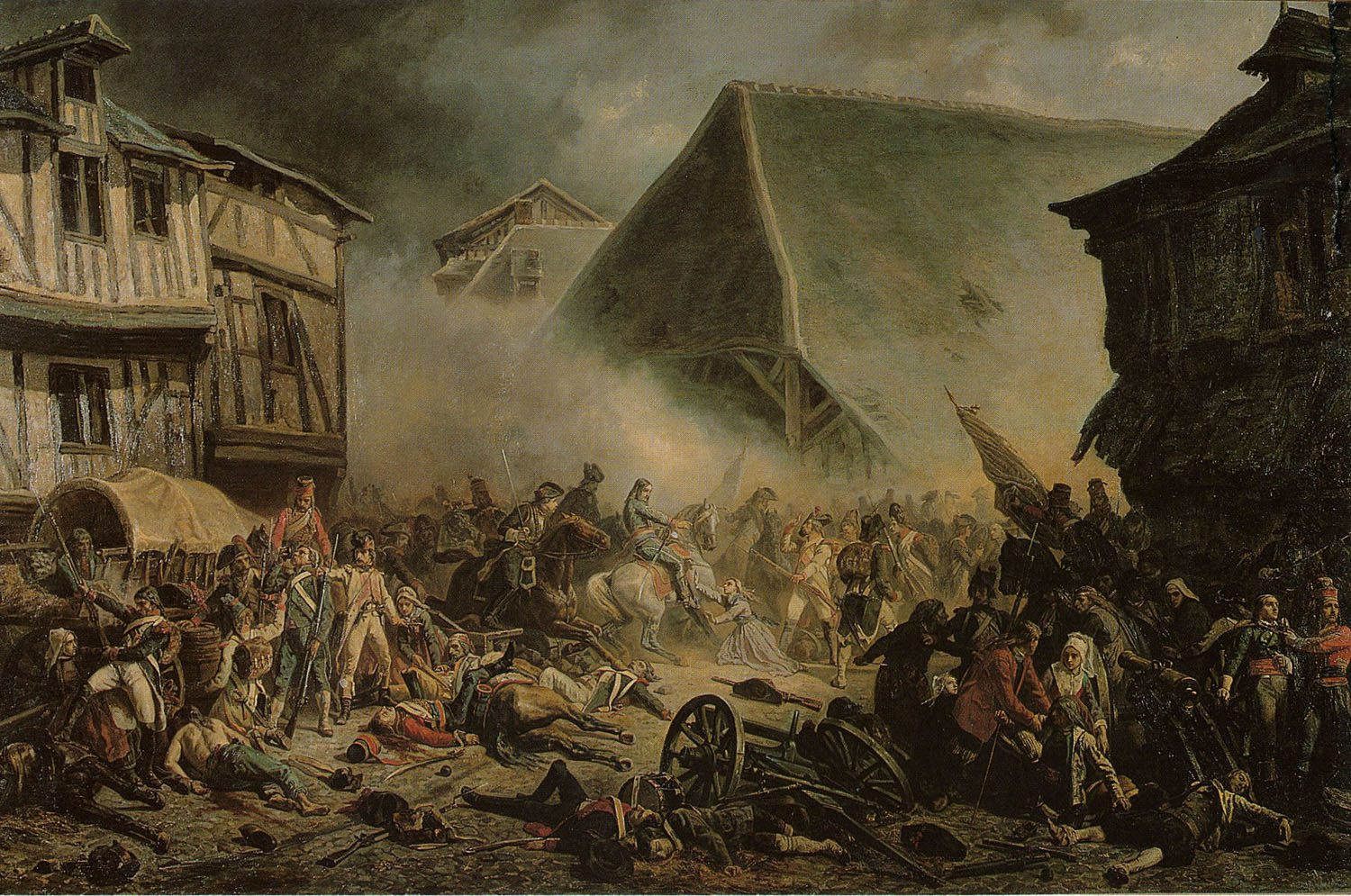
Bataille du Mans, 13 décembre 1793 (1852), a 171 x 294 cm oil on canvas by Jean Sorieul (1825-1871), located in Musée de Tessé, Le Mans, France
Public domain, via Wikimedia Commons
The remains of some victims massacred by revolutionaries in 1793 during the Vendée wars, discovered by chance a few years ago in Le Mans, are to be given a burial at the request of the mayor of Le Mans. This would be a rare acknowledgement of the crimes of the Revolution.
In 2009, construction work on a cultural centre in Le Mans, western France, uncovered the bones of 154 men, women, and children massacred during the Battle of Le Mans in December 1793, at the height of the Revolutionary Terror.
The Vendée insurgents in revolt against the Republic had embarked on a military campaign across Anjou, Brittany and Normandy, in the hope of joining forces with the British and some of the emigrant nobility on the coast. This expedition, known as the Virée de Galerne, ended in bitter failure. On their way back to Vendée, the insurgents came up against Republican troops in Le Mans, who had been sent from Paris by the Convention to crush the revolt. The victims exhumed in 2009 were massacred during the battle, which took place on December 13, 1793 and resulted in very heavy losses for the already weakened Catholic and Royal Army.
154 remains were discovered, a mixture of men, women and children, among whom historians have identified “70 men, 38 women, 18 teenagers, a young child and a foetus”. The number of injuries observed on the bodies proves the violence of the massacre. 60% of the murders were committed with knives, 25% with rifle butts, and only 15% with firearms.
These 154 victims are just some of those who died in this terrible confrontation. Historians today agree that the battle of Le Mans claimed around 6,000 victims: 2,500 Vendeans during the battle itself, then 3,500 during the repression in the days that followed. The Republicans, for their part, suffered only around a hundred casualties.
The newspaper Ouest-France points out that this is the first time that one of the countless mass graves left in the land of the West by the Revolution has been examined in this way—given that the phenomenon of the Vendée Wars is still taboo in French historical research. On 8 December 2023, almost 230 years to the day after the events, a scientific symposium was held in Le Mans on the discovery of these 154 bodies, bringing together various historians specialising in the Vendée Wars.
On this occasion, the socialist mayor of Le Mans and former Minister of Agriculture under François Hollande, Stéphane Le Foll, said he was in favour of giving these victims a burial. Two putative locations are being considered, either in Le Mans, where the battle took place, or in Saint-Florent-le-Vieil, an emblematic site of the Vendée wars, as it was one of the main crossing points on the Loire where several decisive battles were fought in 1793 and 1795.
What is new is the tone with which the prospect of this burial site is being considered. The issue had already been raised in 2016. Several local associations had argued in favour of reburial in shrines in Vendée or Brittany, but these suggestions were rejected for fear of perpetuating a “royalist or regionalist memory,” according to historian Jean-Clément Martin, who was contacted at the time by the magazine L’Histoire. Anxious to avoid any one-upmanship, the Souvenir Vendéen association called in a press release, dated 14 March 2016, for these remains to be brought together at Le Mans in a memorial intended to recall these tragic events “with historical truth and a desire for reconciliation.”
Le Foll’s predecessor as mayor of Le Mans dismissed the idea on the grounds that “you can’t commemorate a civil war.”
“That’s not wrong, but it seems to me that we have a duty to remember those who died,” declared Stéphane Le Foll, in a gesture of official recognition for the victims.
Even if there is still a long way to go before the French Republic, born of the crimes of the Revolution, acknowledges its bloody origins and begins to repent, Stéphane Le Foll’s decision is to be welcomed.
